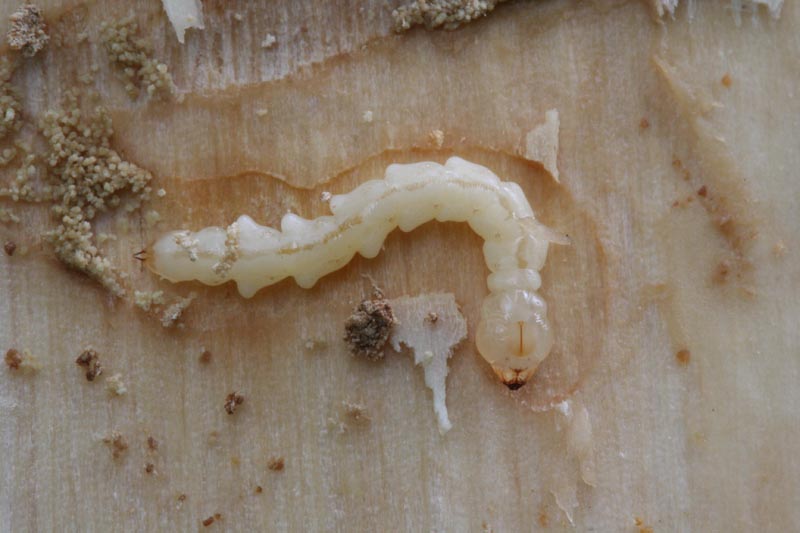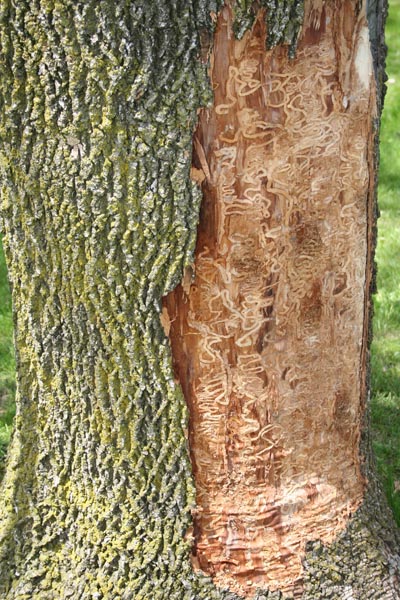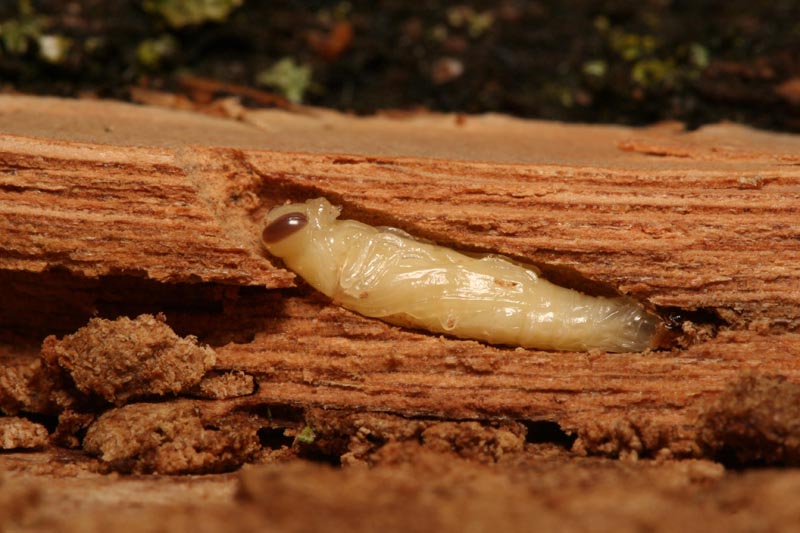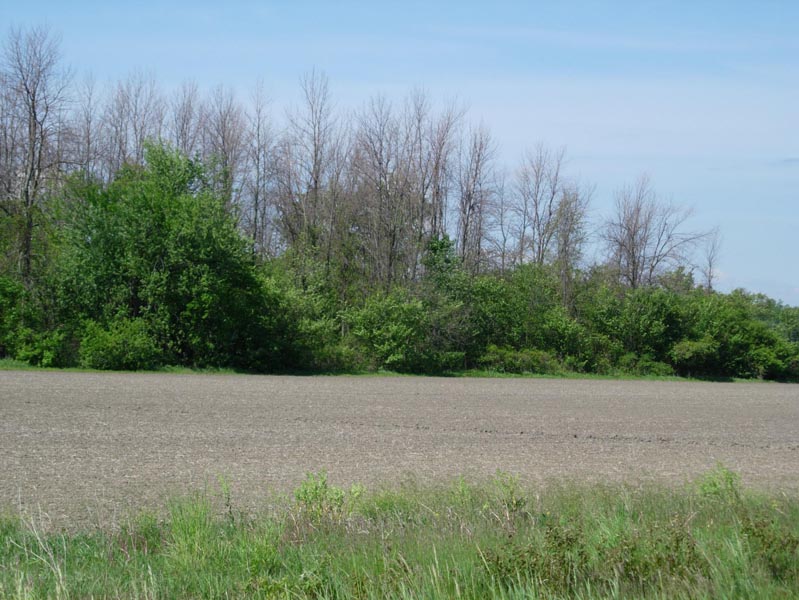Emerald ash borer

- Order: Coleoptera
- Family: Buprestidae
- Latin: Agrilus planipennis Fairmaire
- English: Emerald ash borer
- French: Agrile du frêne
- Synonym(s): Agrilus feretrius Obenberger , Agrilus marcopoli Obenberger
Description
Distribution
British Columbia, Manitoba, New Brunswick, Nova Scotia, Ontario, Quebec
Micro-habitat(s)
Branch, Leaf, Trunk
Damage, symptoms and biology
Tree decline, including:
- yellowing of the foliage
- thinning crown
- evidence of adult beetle feeding on leaves
- long shoots growing from the trunk or roots
- vertical cracks in the trunk
- deformed bark (3-4 mm)
- small D-shaped emergence holes
- S-shaped larval tunnels under the bark filled with fine sawdust
- presence of woodpeckers in winter and woodpecker holes
The EAB has killed millions of ash trees in Southwestern Ontario, Michigan and surrounding states, and poses a major economic and environmental threat to urban and forested areas in both countries. The EAB attacks and kills all species of ash (except Mountain ash which is not a true ash).
The emerald ash borer has only one generation per year in the south of its distribution area in Michigan. Adult emergence starts with the month of June and ends with the end of July. A few days after mating, female lay eggs, one at the time, in bark crevices. One female lays between 60 and 90 eggs during its lifespan. Larvae dig S shaped galleries in the phloem in order to feed themselves. They hibernate in the bark and pupate in April or May. The lifecycle of the emerald ash borer, north of its distibution area, is not known for the moment, but it could last two years.
Comments
Native to eastern Asia, this pest was first discovered in Canada and the U.S. in 2002.
While the EAB can fly up to several kilometres, another significant factor contributing to its spread is the movement of firewood, nursery stock, trees, logs, lumber, wood with bark attached and wood or bark chips.
Regulated materials can be freely moved within a regulated area, but cannot be moved outside of a regulated area without prior written permission from the CFIA. Anyone violating this requirement may be subject to a fine and/or be liable for prosecution.
Regulated materials for EAB include nursery stock, trees, logs, wood, rough lumber including pallets and other wood packaging materials, bark, wood chips or bark chips from ash (Fraxinus species), and firewood of all tree species.
Sources:
[Anonymous], 2004. Invasive sepcies: how to identify emerald ash borer. J. Forest 102: 4-5.
Canadian Food Inspection Agency, [ND].Pest Alert - Emerald Ash Borer (Agrilus planipennis), 1p.
Lavallée, R. 2011. Emerald ash borer: What do you know about it? NRCan, CFS, Laurentian Forestry Centre, Québec, Que. Branching out from the Canadian Forest Service, Laurentian Forestry Centre. No. 71. 2 p.
Troy Kimoto, T., Duthie-Holt, M. et Dumouchel, L. 2006. Exotic Forest Insect Guidebook.Canadian Food Inspection Agency, 120 p.
Other resources
- Emerald Ash Borer - Agrilus planipennis
(Canadian Food Inspection Agency) - Emerald ash borer, regulated areas
(Canadian Food Inspection Agency)
Information on host(s)
Main Host(s)
Oregon ash, ashes, black ash, blue ash, green ash, northern red ash, pumpkin ash, red ash, white ash





